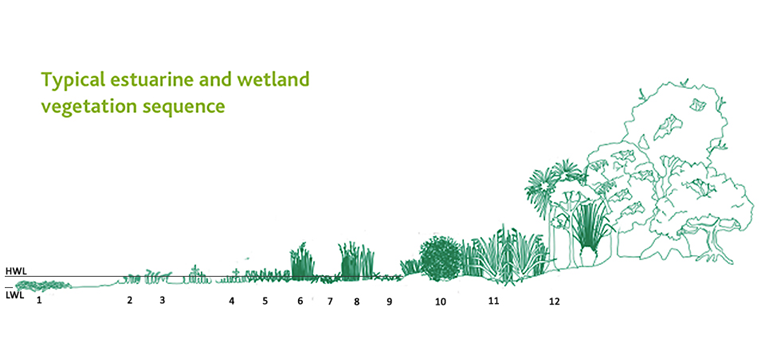Saltmarsh Plants
The saltmarshes of Pāuatahanui Inlet, as is the case with most saltmarsh habitats, are dominated by dense stands of specialised reeds, rushes, herbs and shrubs. These are plants that are terrestrial in origin but have become adapted to varying degrees of salinity enabling them to withstand periods of submersion by salt water.
Saltmarsh plants are essential to the stability of the saltmarsh in trapping and binding sediments. They play a large role in the aquatic food web and the delivery of nutrients to coastal waters. They also support terrestrial animals and provide coastal protection.
Saltmarshes are characterised by a strongly graded zonation of plant communities which reflect the depth and length of submersion experienced by the daily tidal cycles. This zonation is illustrated by the diagram below. Key species at each level of the sea water between low tide and high tide marks are numbered on the diagram and listed on the right.
Click on a name below for more information.
Seagrass (Zostera muerillii)
Seagrass lives in the sea but is not seaweed; it forms ‘meadows’ underwater but is not a grass; nevertheless it does have flowers.
Seagrasses are the only flowering plants that grow in the sea. Around 60 different species are identified worldwide while similar freshwater examples are distinguished by the name, eelgrass.
Zostera muelleri is the only New Zealand representative but is found throughout the country. It grows in the subtidal zone but can become exposed at very low tides. The appearance is of a grass-like plant with long narrow leaves growing from a sub-surface creeping rhyzome. The flowers are concealed by a sheath at the ends of flowering shoots. It is a favourite food for black swan.
See our main page: Seagrass.
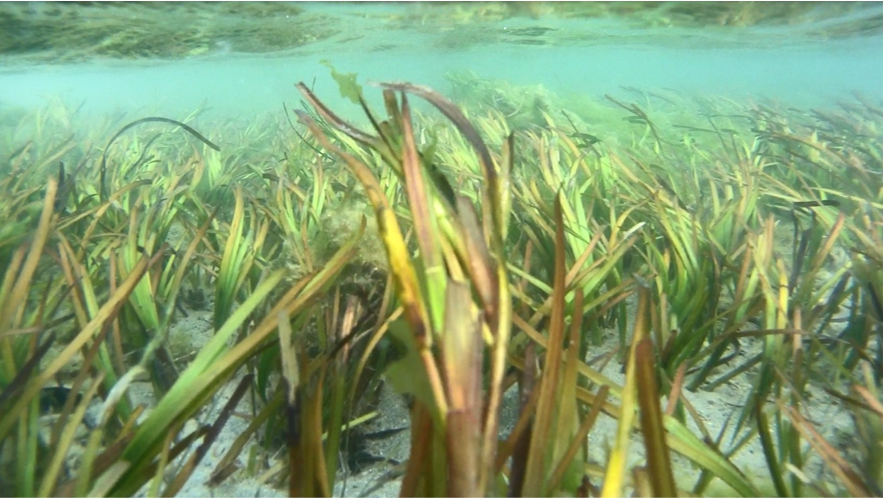
Sea Lettuce (Ulva lactuca)
The sea lettuces comprise the genus Ulva, a group of marine edible green algae that is widely distributed along the coasts of the world’s oceans.
Ulva lactuca is a typical species found all around New Zealand’s shores and looks superficially like a lettuce leaf that is attached to rocks, shells or other stable substrate. The thallus (or frond) is attached by a discoid hold-fast and is just two cells thick, up to 30cm wide, translucent and membranous. It is prolific in areas where nutrients are abundant and therefore indicates the conditions created by local farming practices with run-off from dairy herds or fertiliser use. Ulva lactuca is a summer season plant and in autumn large quantities can be washed up on the shores of the Inlet decaying to produce methane, hydrogen sulfide, and other gases that create a strong sewer-like odour.
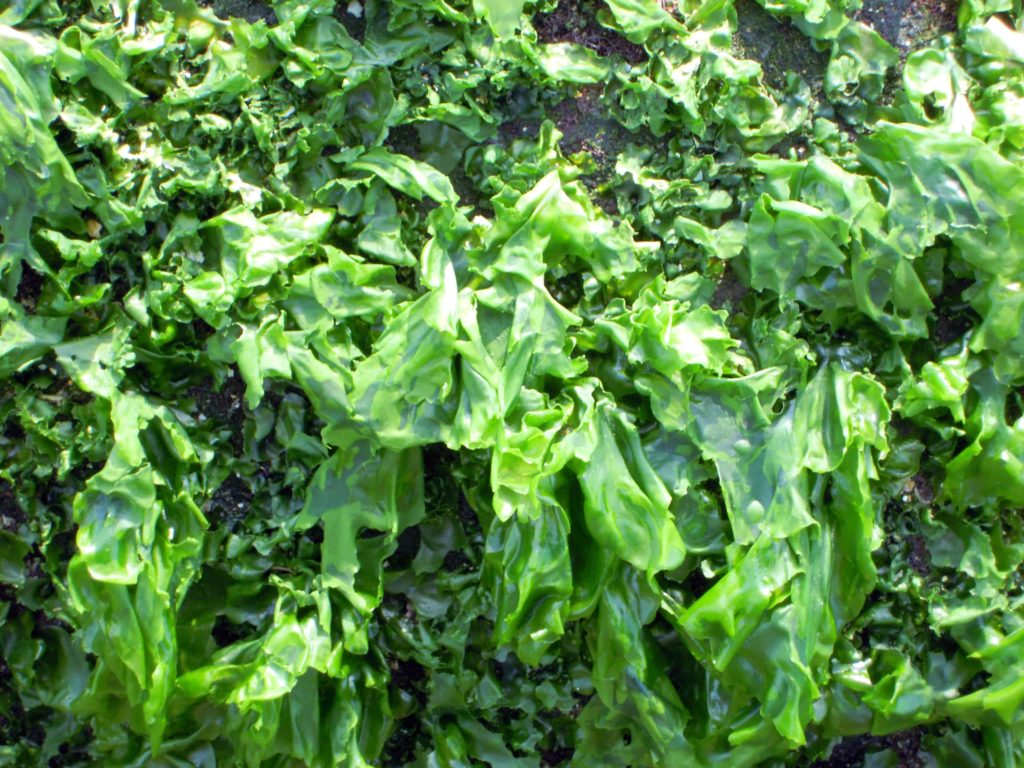
Gut weed (Ulva intestinalis)
U. intestinalis is another species of green marine alga similar to sea lettuce but in this case forms inflated, irregularly constricted, tubular thallus fronds that grow from a small discoid base. The thallus is usually unbranched and between 10 and 30cm long with a rounded tip. I grows on mud and sand as well as rocks, shells and other seaweed.
Occurring in a wide range of habitats it is often abundant in brackish water where there is freshwater run-off. The seaweed may become detached from the substratum and, buoyed up by gas, continue to grow in floating masses. It is a summer annual, decaying and forming masses of bleached white fronds towards the end of the season.
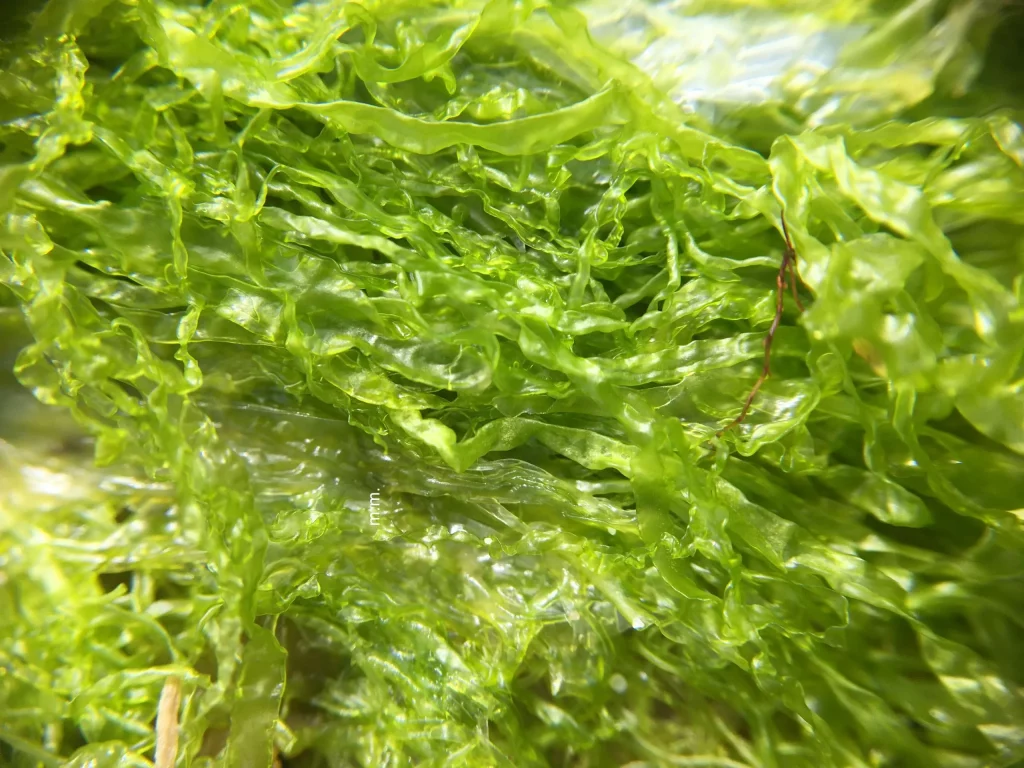
Sea primrose (Samolus repens)
Samolus repens is a species of water pimpernel native to New Zealand and common in other temperate and subtropic coastlines. The growth habit is as a prostrate ground cover found at low water line. It has small fleshy leaves and white or occasionally pink flowers from September through to March or April.
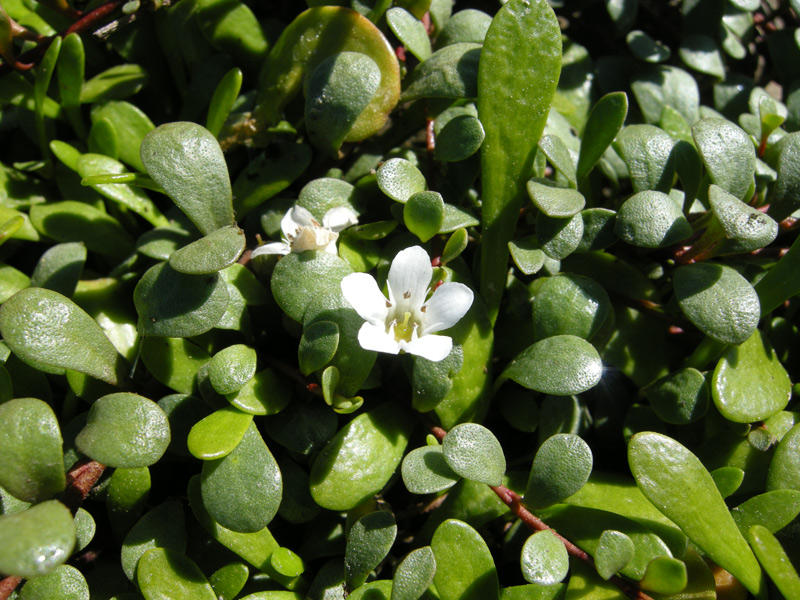
Beaded glasswort (Salicornia quinqueflora)
Glassworts are annual, succulent halophytic plants that thrive in the high saline conditions of a saltmarsh. There are a number of different species of glasswort found in many countries around the world but the genus Salicornia was originally named in 16th century England for plants whose ashes could be used to make soda-based glass.
S. quinqueflora is often found next to, and in the mudflats of the Inlet although it can also tolerate dryer areas. It is a small succulent shrub forming a mat that can be seen at the water’s edge at low tide. It is usually less than 30 cm tall, with a jointed horizontal main stem and upright branches. The leaves are small and scale-like and the plant may look leafless.
The usual colour is green but after high tide the plant is sometimes left covered in mud and it looks grey. The foliage turns red in autumn. Unlike most plants, the glasswort can tolerate being totally covered by seawater.

Sea Rush (Juncus kraussii)
You will find two different types of reed close to and in the water, the sea rush and jointed wire rush.
The nearest to low water mark is the the sea rush (Juncus kraussii) which forms extensive ‘meadows’ between low and mid tide. It is the most dominant of the plant species in the saltmarshes of the Inlet, particularly in the Wildlife Reserve. It is a dense to loosely tufted, dark brown to brownish-black, perennial herb. The sea rush has a smooth, dark green stem with a flower head near the top while it’s leaves look similar to the flowering stem but are shorter.
Full description available here.
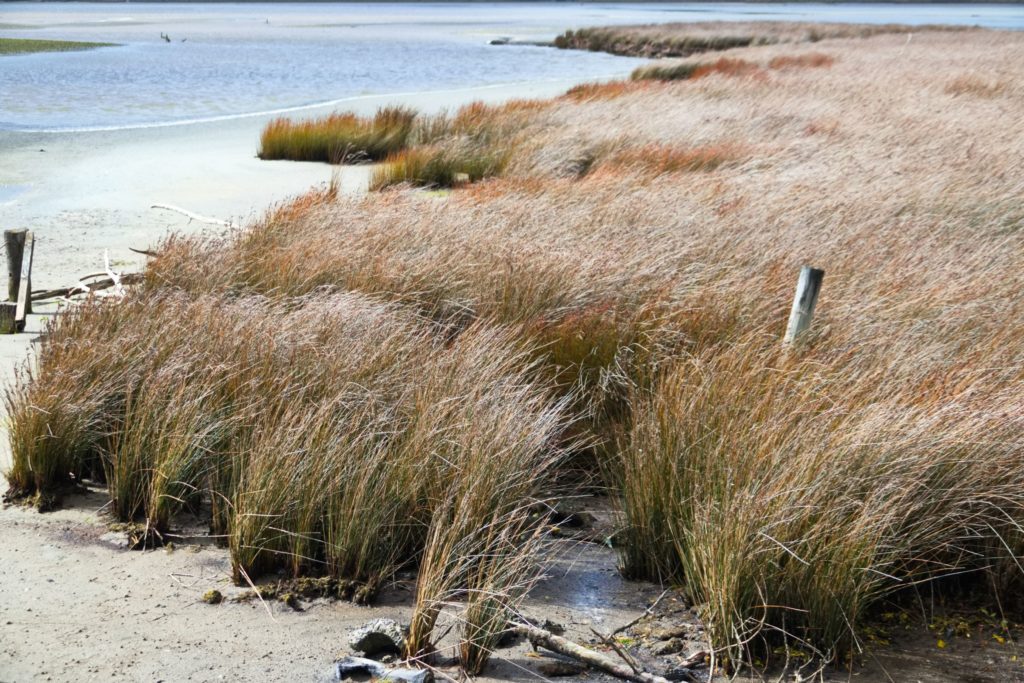
Batchelors Button (cotula coronopifolia)
Bachelors button is a flowering plant of the daisy family and is commonly found in the specialized ecological niche of the Inlet’s wetlands. It prefers muddy, anoxic wetlands and brackish water. The plant is native to New Zealand but also found in southern Africa.
It is a halophyte that is very salt-tolerant. The plant has fat, fleshy leaves that store water during times of saline inundation. The reddish stems and green, blade-shaped leaves are coated with a shiny cuticle to retain moisture. Individual plants spread stems along the ground and send up the knobby flowers at intervals. The flowers appear as bright yellow discoid heads that look like thick buttons. Each floret produces a single-seeded dry fruit that is dispersed by water.
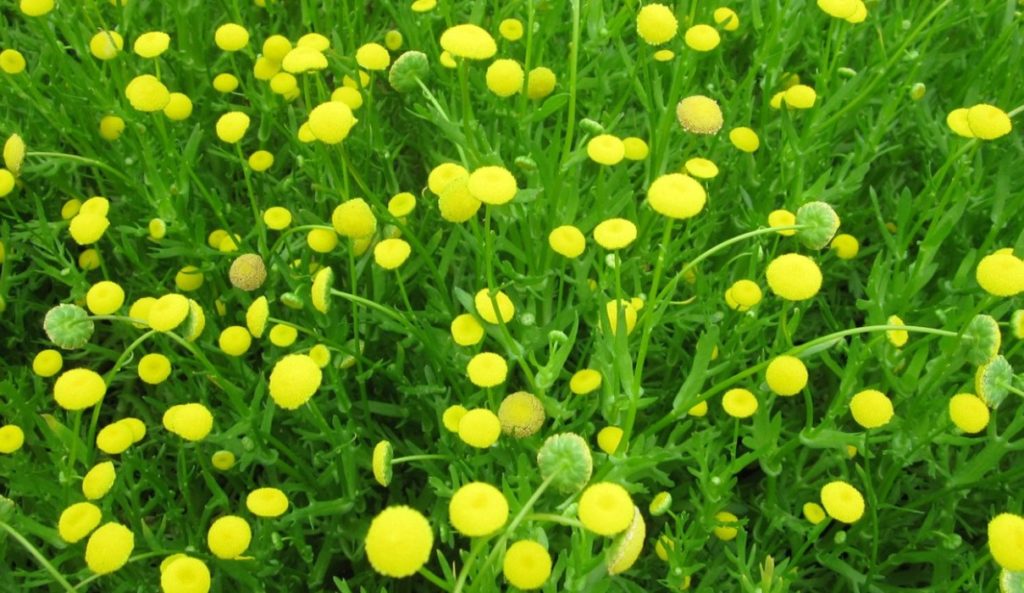
Jointed wire rush (Apodasmia similis)
The jointed wire rush is a reed and not a true rush. It covers large areas in the upper tidal mud flats above the zone where sea rush finishes. When it turns its distinctive red-gold shade it can adds an attractive vibrant colour to the saltmarsh. Its flowering stem is normally grey-green with brown bumps or nodes up the length where it appears to bend slightly, giving it the name. The flowering heads are very small and found at the nodes. Leaves are very much reduced to brown bracts.
Jointed wire rush is a very hardy and telerates a wide range of condtions, but often found in coastal marshlands, ponds and estuaries.
Full description here.

Remuremu (Selliera radicans)
Remuremu is a creeping herbaceous flowering plant found in New Zealand, south-eastern Australia and Chile. It does not like to dry out so it is found in salt marshes, wetlands and lakes, growing in the water, or very close to it. It is a succulent hydrophyte. It forms a dense mat of tiny fleshy but flattened, club-shaped leaves emerald green in colour. Patches can be up to 1m in diameter but are no higher than 15cm. In spring to summer it has many white, lopsided half-flowers.
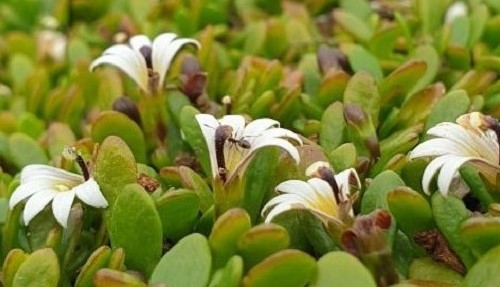
Saltmarsh ribbonwood (Plagianthus divaricatus)
The ribbonwood is an upright shrub with closely interwoven branches giving it a very entangled look. The narrow, thick, leathery leaves are in small bunches on short branches, and are only 5 – 30mm long. Its small flowers (up to 5 mm diameter) are greenish cream and occur solitarily along the branches from September to November.
This shrub is found in coastal environments in areas with salt swamp, sandy banks and throughout estuaries and is the only New Zealand shrub that can tolerate its roots in salty water.
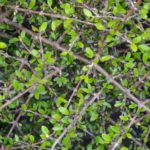
Note: ribbonwood is similar in appearance to mingimingi and both can occur together. However, ribbonwood’s small thin green leaves have a reddish tinge as do the branches which weave in and out of each other. Mingimingi branches are a bit thicker and more ridgid.
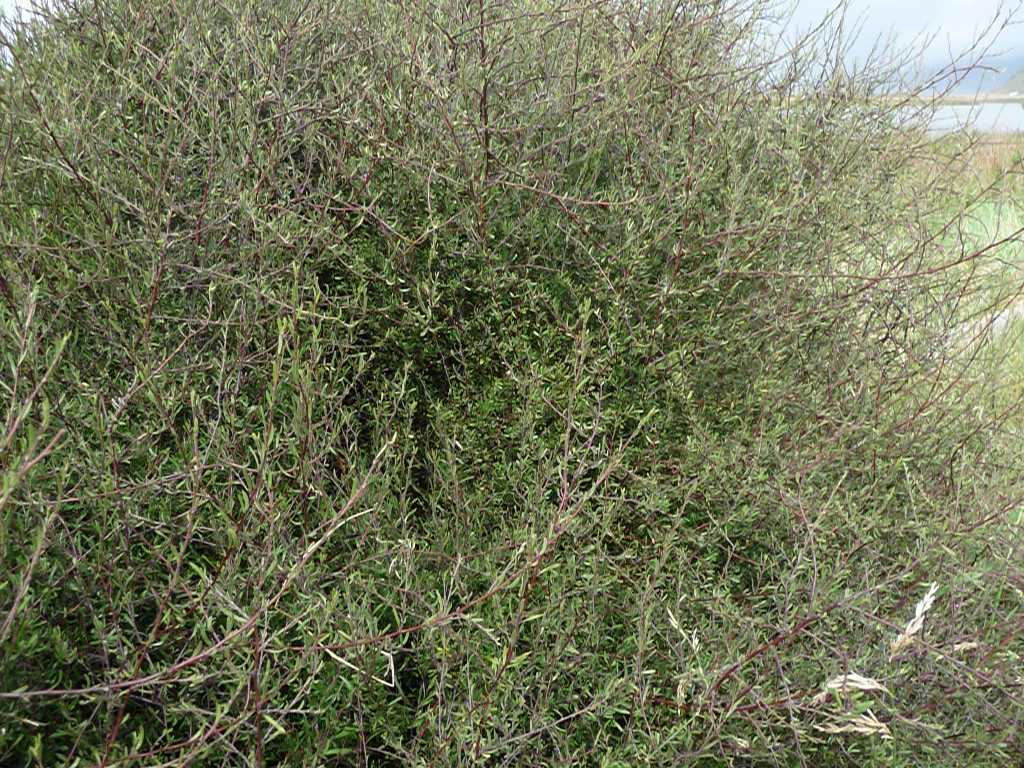
Flax (Phormium tenax)
There are two species of flax found throughout New Zealand. The height and the stiffness of the leaves are how to tell them apart. Phormium tenax can grow over 2 metres and the leaves and seed pods stand tall. Phormium cookianum leaves and seed pods flop and the plant is much smaller. However, where the two different species grow together, hybrids can breed. Even though P. cookianum is commonly known as the mountain flax it is also found in scrub areas and on the coastline.

Cabbage tree (Cordyline australis)
The New Zealand cabbage tree is a very unusual plant, related to asparagus and yucca, and representing one of the few woody examples of the family. Once classified as a lilly it is now recognised as being in a separate family. Cordyline grows in a broad range of habitats, including forest margins, river banks and open places, and is abundant near swamps. It needs a lot of light to germinate and therefore is always found naturally where there is little other forest canopy to shade young trees. In swamp areas it is found above high tide but likes damp ground and therefore occurs close to the stream margins.

